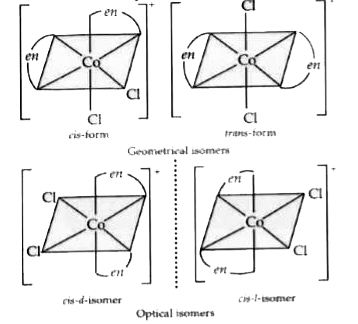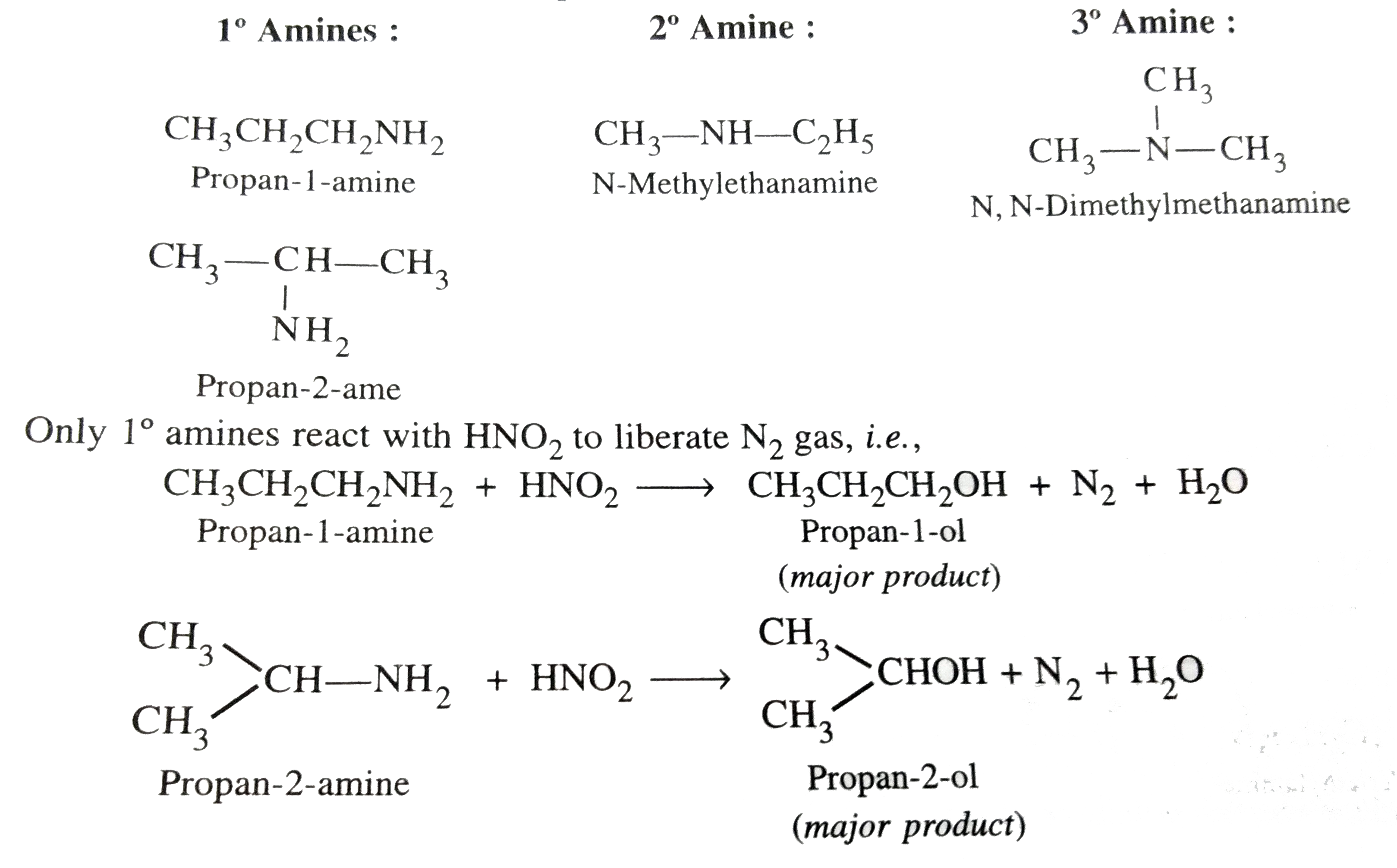InterviewSolution
This section includes InterviewSolutions, each offering curated multiple-choice questions to sharpen your knowledge and support exam preparation. Choose a topic below to get started.
| 251. |
Which increases on increase of temperature |
|
Answer» Energy of ACTIVATION ` (E_(a))` |
|
| 252. |
Which of the following is correct for |
|
Answer» `CH_(3)-COClgtCH_(3)-COOCO-CH_(3)gtCH_(3)-COC_(2)H_(5)gtCH_(3)-CONH_(2)` |
|
| 253. |
The volume of a colloidal particle, V_(c) as compared to the volume of a solute particle in a true solution, V_(s), could be |
|
Answer» `(V_(c))/(V_(s))~~1` `therefore(V_(c))/(V_(s))=((4//3)pir_(c)^(3))/((4//3)pir_(s)^(3))=((r_(C))/(r_(s)))^(3)=((10)/(1))^(3)=10^(3)` |
|
| 254. |
The unit of resistivity is ……….. . |
|
Answer» `Omega m^(-1)` |
|
| 255. |
Which one of the following rubber is used in the manufacture of chemical container andconveyer belts? |
|
Answer» Buna-N |
|
| 256. |
Write the structure and IUPAC name of all the isomeric alcohols with molecular formula C_(5)H_(12)O |
|
Answer» Solution :(i) `CH_(3)CH_(2)CH_(2)CH_(2)CH_(2)-Ohto`Penta-1-ol (ii) `CH_(3)CH_(2)-CH_(3)-underset(OH)underset(|)(CH)-CH_(3)to` Pentan-2-ol (iii) `CH_(3)-CH_(2)-overset(OH)overset(|)(CH)-CH_(2)-CH_(3)to` Pentan-3-ol (iv) `CH_(3)-underset(OH)underset(|)(CH)-underset(CH_(3))underset(|)(CH)-CH_(3)to` 3-Methalybutaj-2-ol v. `CH_(3)-CH_(2)-underset(OH)underset(|)overset(CH_(3))overset(|)(C)-CH_(3)to`2-Methylbutan-2-ol VI. `CH_(3)-underset(CH_(3))underset(|)overset(CH_(3))overset(|)(C)-CH_(2)OHto2,2`- DIMETHYL propan -1-ol |
|
| 257. |
Unit of rate constant of a reaction is same as that of its rate. What is the order of this reaction? |
| Answer» SOLUTION :ZERO ORDER | |
| 258. |
Which is not true about the coordination compound [Co(en)_(2)Cl_(2)]Cl? |
|
Answer» It exhibits geometrical isomerism 
|
|
| 259. |
Write Nernst equation for the reaction : Zn(s)|Zn^(2+)(aq)||Cu^(2+)(aq)Cu(s) |
| Answer» Solution :`E_(CELL)=E_(cell)^(@)-(0.0591)/(2)"LOG"([ZN^(2+)(aq)])/([CU^(2+)(aq)])` | |
| 260. |
Which of the following salt does not give any ppt with AgNO_(3) sol. : |
|
Answer» `F^(-)` salt <BR>`CL^(-)` salt AgCl - white ppt, AgBr : light yellow ppt AgI : dark yellow ppt |
|
| 261. |
Which of the following does not impart colour to the flame ? |
|
Answer» LiCl |
|
| 262. |
The reference electrode is made up of |
|
Answer» `Hg_(2)Cl_(2)` |
|
| 263. |
Writer the IUPAC name of the following (i) CH_3CH=CHCH(CH_3)(Cl) (ii) CH_2=C(CH_3)CH(CH_3)(Cl) (iii) CH_3CH=C(CH_3)CH(CH_3)(Cl) (iv) CH_3CH=C(CH_3)CH_2Cl (v) CH_3CH=CHCH_2Cl (vi) CH_2=C(CH_3)CH_2Cl |
|
Answer» Solution :(i) 4 - Chloropent - 2 - ENE (II) 3 - Chloro - 2 - methylbut - 1 - ene (III) 4 - Chloro - 3 - methylpent - 2 - ene (iv) 1 - Chloro - 2 - methylbut - 2 - ene (v) 1 - Chlorobut - 2 - ene (VI) 3 - Chloro - 2 - methylpropene |
|
| 264. |
The slope and intercept respectively of the graph drawn between log(x)/(m) and logP in respect of the logarithmic form of Freundlich adsorption isotherm are |
|
Answer» `n, LOG(1)/(K)` |
|
| 265. |
What are emulsions ? How are they classified ? State an application of emulsification. |
|
Answer» Solution :Emulsion: When a LIQUID is dispersed in another liquid, it is CALLED emulsion. There are two types of emulsion : (i) WATER in oil : When water is dispersed in oil, it is called water in oil emulsion. For example, butter. (ii) Oil in water : When oil is dispersed in water, it is called oil in water emulsion. For example, MILK. FATS are digested by emulsification with the help of bile juice |
|
| 266. |
Which of the following statements is more correct? |
|
Answer» Catalyst only ACCELERATES the rate of a CHEMICAL reaction |
|
| 267. |
Which of the reactions can not be used to synthesize propyne ? |
|
Answer» `CH_(3)-CH=CH-Brunderset(t-ButOH)overset(t-ButO^(-)//Delta)rarr` |
|
| 268. |
What is the action of mixture of NaNO_(2) and dil. HCl on : (a) Ethylamine, (b) Aniline (c ) Diehylamine How is nylon 6,6 prepared ? Whar are antacids'? Write any 'two' side effects of tranquilizers. |
|
Answer» Solution :(a)Action of `NaNO_(2)` and dil. HCl on ethyl amine : `CH_(3)CH_(2)-NH_(2)+HONO overset(0*5^(@)C)to C_(2)H_(5)OH+N_(2)harr` `"Ethyl amine"""+H_(2)O` (b) Aniline : Benzene diazonium chloride is FORMED.  (c) Diethyl amine :  Nylon 6,6 : It is prepared by the condensation polymerisation of hexamethylenediamine with adipic acid under high pressure and at high temperature. `nHO-underset("Adipic acid")overset(O)overset(||)C-(CH_(2))_(4)-overset(O)overset(||)C-OH+underset("Hexamethy lene diamine")(nH_(2)N-(CH_(2))_(6))-NH_(2)to` `[-overset(O)overset(||)C-(CH_(2))_(4)-overset(O)overset(||)C-NH(CH_(2))_(6)-NH]_(n)+2nH_(2)O` Two side effects of tranquilisers are : 1. DISORIENTATION and Confusion 2. Respiratory Distress or Arrest |
|
| 269. |
When (NH_(4))_(2)Cr_(2)O_(7) is heated |
|
Answer» There is OXIDATION of N |
|
| 270. |
Why are fluorine and oxygen compounds called oxygen fluorides? |
| Answer» SOLUTION :The BINARY compounds of fluorine and oxygen are called fluorides of oxygen rather than OXIDES of fluorine because fluorine is more electronegative than oxygen. However, compounds of oxygen and other HALOGENS are called oxides because oxygen is more electronegative than other halogens. | |
| 271. |
Which of the following can be oxidised by acidified K_2Cr_2O_7 ? |
|
Answer» NITRATE ions |
|
| 272. |
Which of the two is more basic and why? CH_(3)NH_(2) or NH_(3). |
| Answer» Solution :Due to `+I` effect of `-CH_(3)` group, electron DENSITY on N- ATOM increases, hence METHYL amine is STRONGER than ammonia. | |
| 273. |
Which of the following bonds require the largest amount of energy to dissociate the bond concerned ? |
|
Answer» H-H BOND in `H_2` |
|
| 274. |
Which of the following factors is of no significance for roasting sulphide ore to the oxide and not subjecting sulphide ore to carbon reduction directly ? |
|
Answer» `CO_(2)` is more volatile than`CS_(2)` |
|
| 275. |
Which one of the following characteristics is associated with adsorption |
|
Answer» `DeltaG`is NEGATIVE but `DeltaH` and `DELTAS` are positive Adsorption is exothermic process, so `DeltaH` = negative In adsorption ENTROPY decreases, so `DeltaS` = negative so `DeltaG, DeltaH and DeltaS` all are negative |
|
| 276. |
Write structure of different isomers corresponding to the molecular formula, C_(3)H_(9)N. Write IUPAC names of the isomers which will liberate nitrogen gas on treatment with nitrous acid. |
Answer» SOLUTION :In all FOUR STRUCTURAL ISOMERS are POSSIBLE. These are: 
|
|
| 277. |
Which of the following is a foaming agent in froth flation process |
|
Answer» pine oil |
|
| 278. |
The relation between pK_(b) and logK_(b) is given by |
|
Answer» `pK_(b)=logK_(b)` |
|
| 279. |
Who gave the law of independent migration of ions ? |
| Answer» SOLUTION :KOHLRAUSCH | |
| 280. |
Which of the following can be oxidised by SO_2 ? |
|
Answer» `K_(2)Cr_(2)O_(7)` |
|
| 281. |
Which of the following reaction will not occur? |
|
Answer» `C_6H_5N_2^(+) + CuBr overset(HBR)to C_6H_5-Br`  Here , REAGENT used is `C_6H_5N_2^+` instead of `C_6H_5N_2`. |
|
| 282. |
Which of the following sequence ofT and F is correct for given statements. Here T stands for True statement and F stands for False statement. (i) Troposphere is the lowest region of atmosphere inwhich the human beings along with other organismslive.(ii) Troposphere extends up to the height of I 0 km fromsea level.(iii) Stratosphere lies above troposphere, between 10 and20 km above sea level.(iv) Troposphere contains much little water vapour,dinitrogen, dioxygen and ozone(v) Stratosphere contains ozone, and cloud formationalso takes place in this region. |
|
Answer» TTTTT |
|
| 283. |
Which are the properties of sols? |
|
Answer» Adsorption |
|
| 284. |
Which of the following after burning at room temperature gives gaseous oxide |
|
Answer» H |
|
| 285. |
What is transition stte? |
|
Answer» Solution :Transition state or activated complex : The configuration of atoms formed from reactant molecules and which is at the peak of barrier in energy PROFILE diagram having maximum potential energy compared to reactants and products is called transition state or activated complex. `A-B +C rarr UNDERSET("Transition state")(A.........B........C) rarr A+B-C` |
|
| 286. |
Which of the following is called Bayer's reagent |
|
Answer» Alk `KMnO_(4)` |
|
| 287. |
Which of the following has maximum number of unpaired electrons? |
|
Answer» <P>`CU^(2+)(Z=29)` `Fe^(3+):[Ar]3d^(5)` `Fe^(3+)`has maximum (five) unpaired electrons. |
|
| 288. |
The van'tHoff reaction isotherm is: |
|
Answer» `triangleG=RT log_g K_p` |
|
| 289. |
the sing of DeltaG for the process of melting of ice at 273 K and 1 atm pressurme is |
|
Answer» POSITIVE |
|
| 290. |
The vapour pressure of pure water at 25^(@)C is 23.62 mm. What will be the vapour pressure of a solution of 1.5 g of urea in 50 g of water ? |
|
Answer» `(P_(A)^(@)-P_(S))/P_(S)=x_(B)=n_(B)/n_(A)=(W_(B)//M_(B))/(W_(A)//M_(A))= ` `P_(A)^(@)=23.62 mm, W_(B)=1.5g, M_(B)=60"mol"^(-1),W_(A)=50 G,M_(A)=18" g mol"^(-1)` `(23.62-P_(S))/P_(S)=((1.5g)//(60"g mol"^(-1)))/((50g)//(18" g mol"^(-1)))=0.009, 23.63 -P_(S)=0.009 P_(S)` or `1.009 P_(S)=23.62 or P_(S)=(23.62)/(1.009)=23.41 mm.` |
|
| 291. |
Write the Nernst equation for the half cell Zn^(2+)""_((aq))//Zn_((s)). |
|
Answer» SOLUTION :Solution : `E=E^(@)-2.303(RT)/(2F)logZn^(2+)` `E_(Zn^(2+)//Zn)=E^(@)"_(Zn^(2+)//Zn)-2.303(RT)/(2F)log[Zn^(2+)]` |
|
| 292. |
What happens when (write reactions only). (i) Nitroprppane is treated with LiAlH_(4). (ii) Ethyl isocyanide undergoes hydrolysis. (iii) Benzene diazonium chloride reacts with phenol in basic medium. |
|
Answer» Solution :(i) `CH_(3)CH_(2)HC_(2)NO_(2)overset(LiAlH_(4))(to) CH_(3)CH_(2)CH_(2)NH_(2)+2H_(2)O` (ii) `C_(2)H_(5)N+2H_(2)OtoC_(2)H_(5)NH_(2)+HCOOH` 
|
|
| 293. |
Which one of the following is a synthetic rubber? |
|
Answer» NEOPRENE |
|
| 294. |
Which of the following element of nitrogen family produce maximum number of oxy-acids |
|
Answer» N |
|
| 295. |
What are alums ? |
|
Answer» Solution :The NAME alum is given to the double salt of POTASSIUM aluminium sulphate. `[K_(2)SO_(4).Al_(2)(SO_(4))_(3).24.H_(2)O]` |
|
| 296. |
Which is best solvent |
|
Answer» `H - CHO` |
|
| 297. |
Which of the following oxidation state is common for all lanthanoids? |
| Answer» SOLUTION :`(+3)` is most COMMON oxidation states for lanthanoids. | |
| 298. |
Which one of the following used as fuel in rockets? |
|
Answer» `LiqO_(2)` |
|
| 299. |
When 0.1 mole of glucose is dissolved in 10 mole of water, the vapour pressure of water is |
|
Answer» Increased by 1% `(p_(A)^(@)-p_(A))/(p_(A)^(@))=x_(B)` or `(DELTAP)/(p_(A)^(@))=(n_(B))/(n_(A)+n_(B))` `(Delta p)/(p_(A))=(0.1)/(10+0.1)~~(0.1)/(10)=(1)/(100)=1%` |
|
| 300. |
Which characteristic of zero group elements is common : |
|
Answer» Each of them has the same ATOMIC number |
|